1. Berk BC, Fujiwara K, Lehoux S. 2007; ECM remodeling in hypertensive heart disease. J Clin Invest. 117:568–575. DOI:
10.1172/JCI31044. PMID:
17332884. PMCID:
PMC1804378.

2. Li J, Xue J, Wang D, Dai X, Sun Q, Xiao T, Wu L, Xia H, Mostofa G, Chen X, Wei Y, Chen F, Quamruzzaman Q, Zhang A, Liu Q. 2019; Regulation of gasdermin D by miR-379-5p is involved in arsenite-induced activation of hepatic stellate cells and in fibrosis via secretion of IL-1β from human hepatic cells. Metallomics. 11:483–495. DOI:
10.1039/C8MT00321A. PMID:
30643918.

3. Chou X, Ding F, Zhang X, Ding X, Gao H, Wu Q. 2019; Sirtuin-1 ameliorates cadmium-induced endoplasmic reticulum stress and pyroptosis through XBP-1s deacetylation in human renal tubular epithelial cells. Arch Toxicol. 93:965–986. DOI:
10.1007/s00204-019-02415-8. PMID:
30796460.

4. Wree A, Eguchi A, McGeough MD, Pena CA, Johnson CD, Canbay A, Hoffman HM, Feldstein AE. 2014; NLRP3 inflammasome activation results in hepatocyte pyroptosis, liver inflammation, and fibrosis in mice. Hepatology. 59:898–910. DOI:
10.1002/hep.26592. PMID:
23813842. PMCID:
PMC4008151.

5. Zhaolin Z, Guohua L, Shiyuan W, Zuo W. 2019; Role of pyroptosis in cardiovascular disease. Cell Prolif. 52:e12563. DOI:
10.1111/cpr.12563. PMID:
30525268. PMCID:
PMC6496801.

6. Asano J, Sato T, Ichinose S, Kajita M, Onai N, Shimizu S, Ohteki T. 2017; Intrinsic autophagy is required for the maintenance of intestinal stem cells and for irradiation-induced intestinal regeneration. Cell Rep. 20:1050–1060. DOI:
10.1016/j.celrep.2017.07.019. PMID:
28768191.

7. Terman A, Brunk UT. 2006; Oxidative stress, accumulation of biological 'garbage', and aging. Antioxid Redox Signal. 8:197–204. DOI:
10.1089/ars.2006.8.197. PMID:
16487053.

8. Lo SH, Hsu CT, Niu HS, Niu CS, Cheng JT, Chen ZC. 2017; Cryptotanshinone inhibits STAT3 signaling to alleviate cardiac fibrosis in type 1-like diabetic rats. Phytother Res. 31:638–646. DOI:
10.1002/ptr.5777. PMID:
28176375.

9. Aoki M, Fujishita T. 2017; Oncogenic roles of the PI3K/AKT/mTOR axis. Curr Top Microbiol Immunol. 407:153–189. DOI:
10.1007/82_2017_6. PMID:
28550454.

10. Xiao T, Luo J, Wu Z, Li F, Zeng O, Yang J. 2016; Effects of hydrogen sulfide on myocardial fibrosis and PI3K/AKT1-regulated autophagy in diabetic rats. Mol Med Rep. 13:1765–1773. DOI:
10.3892/mmr.2015.4689. PMID:
26676365.

11. Li Z, Zhao F, Cao Y, Zhang J, Shi P, Sun X, Zhang F, Tong L. 2018; DHA attenuates hepatic ischemia reperfusion injury by inhibiting pyroptosis and activating PI3K/Akt pathway. Eur J Pharmacol. 835:1–10. DOI:
10.1016/j.ejphar.2018.07.054. PMID:
30075219.

13. Moon SL, Sonenberg N, Parker R. 2018; Neuronal regulation of eIF2α function in health and neurological disorders. Trends Mol Med. 24:575–589. DOI:
10.1016/j.molmed.2018.04.001. PMID:
29716790.

14. Kazemi S, Mounir Z, Baltzis D, Raven JF, Wang S, Krishnamoorthy JL, Pluquet O, Pelletier J, Koromilas AE. 2007; A novel function of eIF2alpha kinases as inducers of the phosphoinositide-3 kinase signaling pathway. Mol Biol Cell. 18:3635–3644. DOI:
10.1091/mbc.e07-01-0053. PMID:
17596516. PMCID:
PMC1951772.

15. Koromilas AE, Mounir Z. 2013; Control of oncogenesis by eIF2α phosphorylation: implications in PTEN and PI3K-Akt signaling and tumor treatment. Future Oncol. 9:1005–1015. DOI:
10.2217/fon.13.49. PMID:
23837763.

16. Calvert JW, Coetzee WA, Lefer DJ. 2010; Novel insights into hydrogen sulfide--mediated cytoprotection. Antioxid Redox Signal. 12:1203–1217. DOI:
10.1089/ars.2009.2882. PMID:
19769484. PMCID:
PMC2864658.

17. Chen K, Rekep M, Wei W, Wu Q, Xue Q, Li S, Tian J, Yi Q, Zhang G, Zhang G, Xiao Q, Luo J, Liu Y. 2018; Quercetin prevents in vivo and in vitro myocardial hypertrophy through the proteasome-GSK-3 pathway. Cardiovasc Drugs Ther. 32:5–21. DOI:
10.1007/s10557-018-6771-4. PMID:
29435775.

18. Burwick N, Zhang MY, de la Puente P, Azab AK, Hyun TS, Ruiz-Gutierrez M, Sanchez-Bonilla M, Nakamura T, Delrow JJ, MacKay VL, Shimamura A. 2017; The eIF2-alpha kinase HRI is a novel therapeutic target in multiple myeloma. Leuk Res. 55:23–32. DOI:
10.1016/j.leukres.2017.01.007. PMID:
28119225. PMCID:
PMC5354961.

19. Bing OH. 1994; Hypothesis: apoptosis may be a mechanism for the transition to heart failure with chronic pressure overload. J Mol Cell Cardiol. 26:943–948. DOI:
10.1006/jmcc.1994.1115. PMID:
7799449.

20. Heusch G, Libby P, Gersh B, Yellon D, Böhm M, Lopaschuk G, Opie L. 2014; Cardiovascular remodelling in coronary artery disease and heart failure. Lancet. 383:1933–1943. DOI:
10.1016/S0140-6736(14)60107-0. PMID:
24831770.

21. Pei Z, Meng R, Li G, Yan G, Xu C, Zhuang Z, Ren J, Wu Z. 2010; Angiotensin-(1-7) ameliorates myocardial remodeling and interstitial fibrosis in spontaneous hypertension: role of MMPs/TIMPs. Toxicol Lett. 199:173–181. DOI:
10.1016/j.toxlet.2010.08.021. PMID:
20837116.

23. Xu YJ, Zheng L, Hu YW, Wang Q. 2018; Pyroptosis and its relationship to atherosclerosis. Clin Chim Acta. 476:28–37. DOI:
10.1016/j.cca.2017.11.005. PMID:
29129476.

26. Qiu T, Pei P, Yao X, Jiang L, Wei S, Wang Z, Bai J, Yang G, Gao N, Yang L, Qi S, Yan R, Liu X, Sun X. 2018; Taurine attenuates arsenic-induced pyroptosis and nonalcoholic steatohepatitis by inhibiting the autophagic-inflammasomal pathway. Cell Death Dis. 9:946. DOI:
10.1038/s41419-018-1004-0. PMID:
30237538. PMCID:
PMC6148242.

27. Jiang C, Jiang L, Li Q, Liu X, Zhang T, Dong L, Liu T, Liu L, Hu G, Sun X, Jiang L. 2018; Acrolein induces NLRP3 inflammasome-mediated pyroptosis and suppresses migration via ROS-dependent autophagy in vascular endothelial cells. Toxicology. 410:26–40. DOI:
10.1016/j.tox.2018.09.002. PMID:
30205151.

30. Ron D, Walter P. 2007; Signal integration in the endoplasmic reticulum unfolded protein response. Nat Rev Mol Cell Biol. 8:519–529. DOI:
10.1038/nrm2199. PMID:
17565364.

32. Huo JY, Jiang WY, Geng J, Chen C, Zhu L, Chen R, Ge TT, Chang Q, Jiang ZX, Shan QJ. 2019; Renal denervation attenuates pressure overload-induced cardiac remodelling in rats with biphasic regulation of autophagy. Acta Physiol (Oxf). 226:e13272. DOI:
10.1111/apha.13272. PMID:
30830723.

33. Zheng SF, Bao RK, Zhang QJ, Wang SC, Lin HJ. 2018; Endogenous hydrogen sulfide promotes apoptosis via mitochondrial pathways in the livers of broilers with selenium deficiency exudative diathesis disease. Biol Trace Elem Res. 186:249–257. DOI:
10.1007/s12011-018-1292-3. PMID:
29524194.

35. Long J, Liu M, Liu S, Tang F, Tan W, Xiao T, Chu C, Yang J. 2019; H
2S attenuates the myocardial fibrosis in diabetic rats through modulating PKC-ERK1/2MAPK signaling pathway. Technol Health Care. 27(S1):307–316. DOI:
10.3233/THC-199029. PMID:
31045549. PMCID:
PMC6598001.

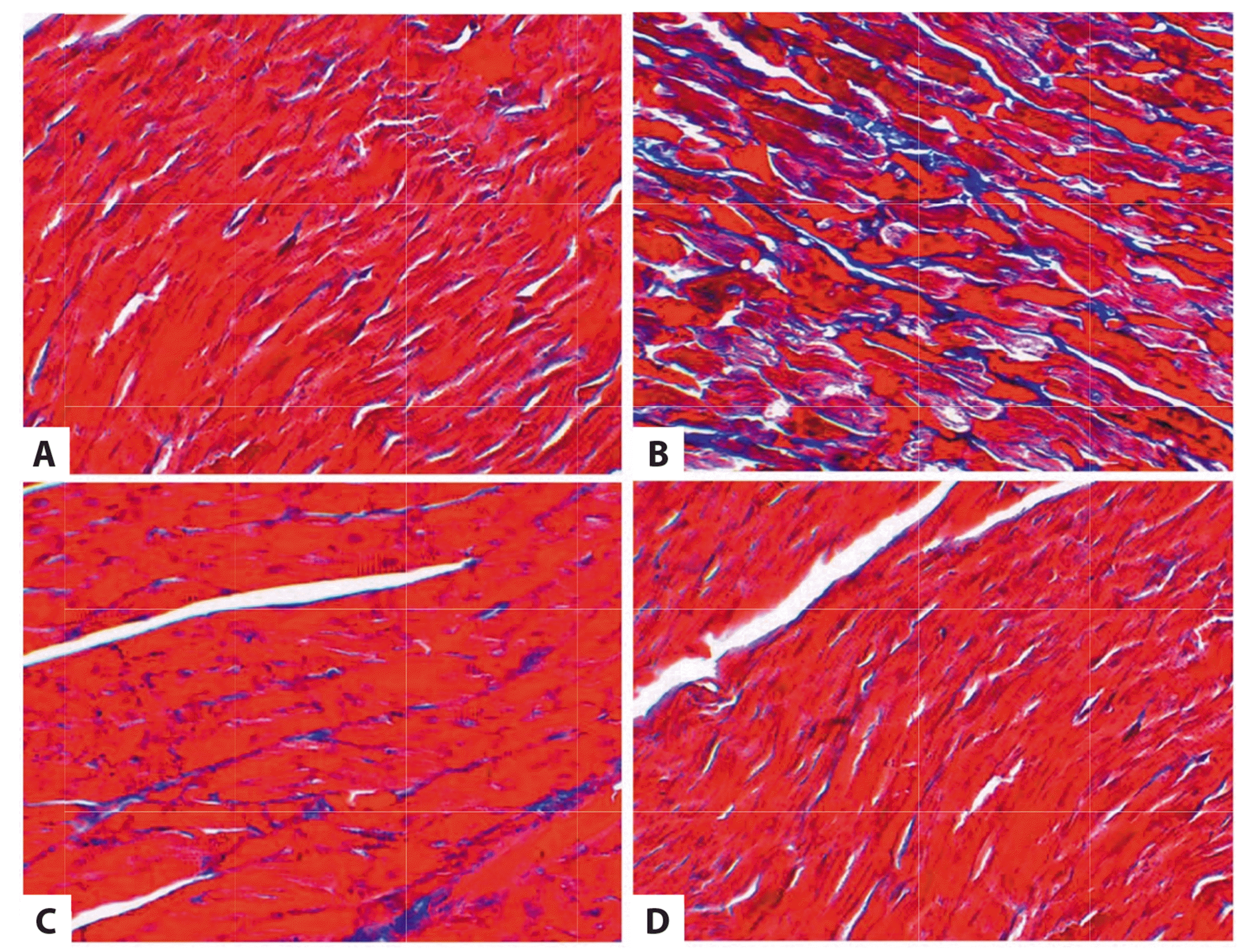
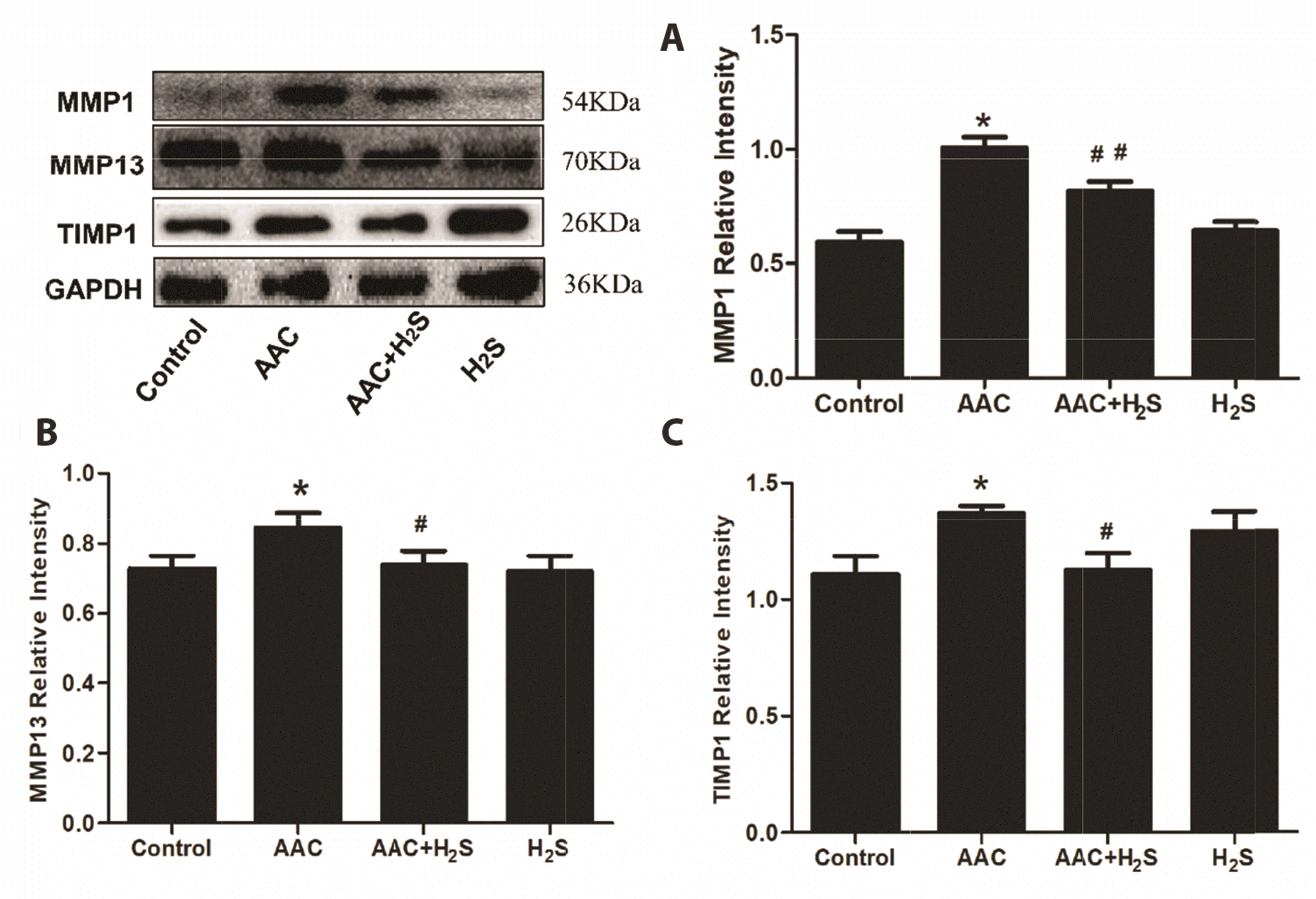
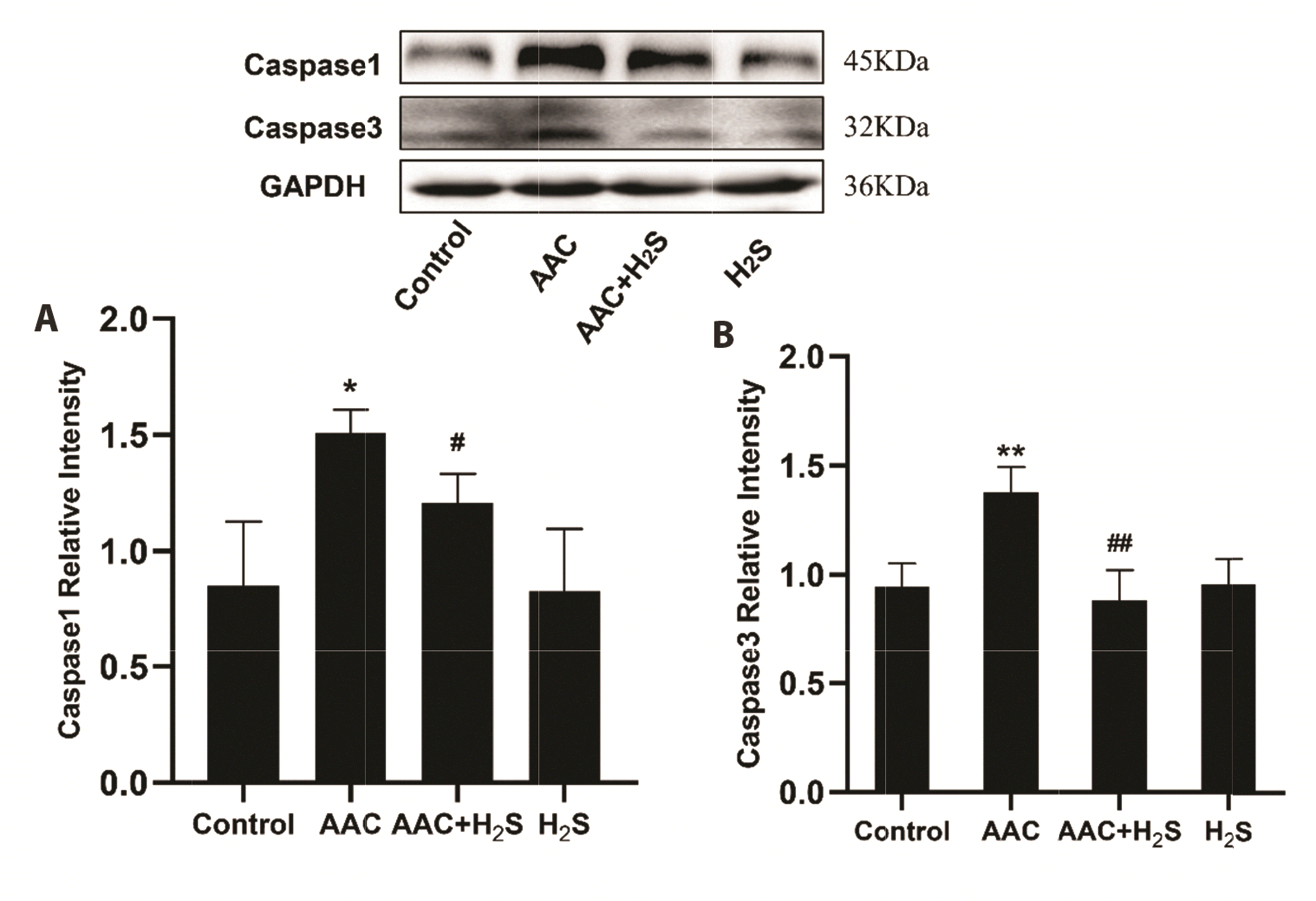
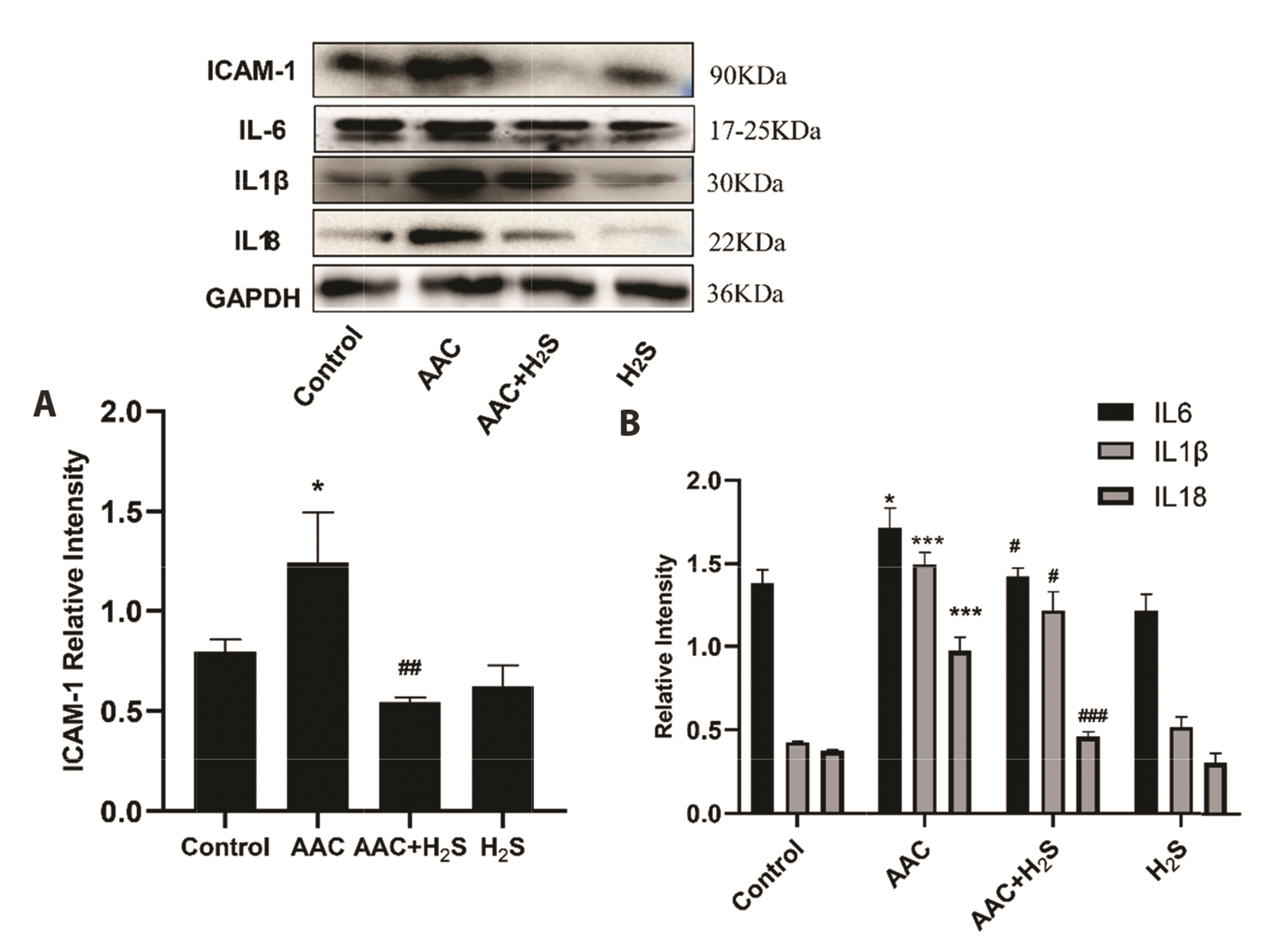

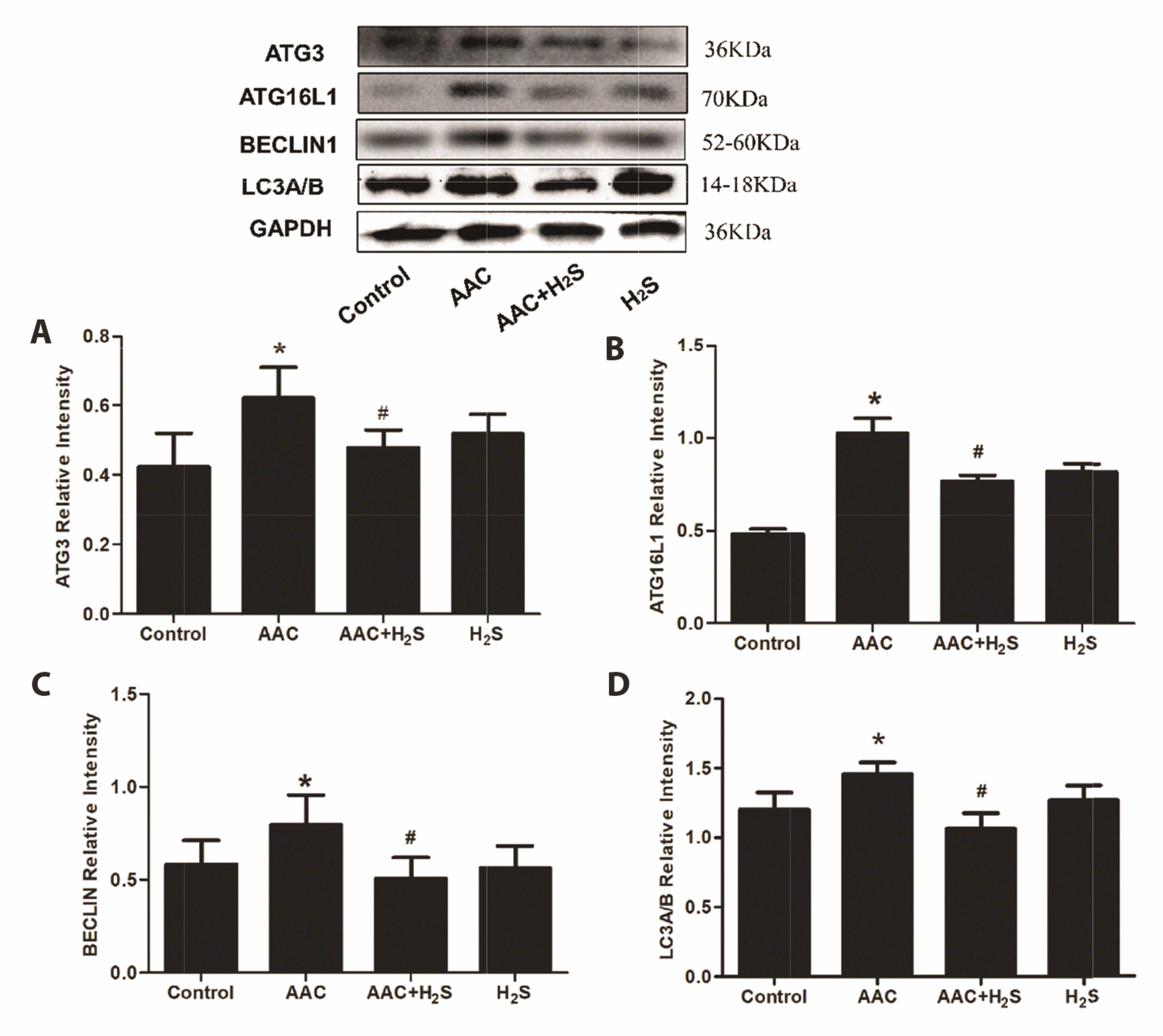
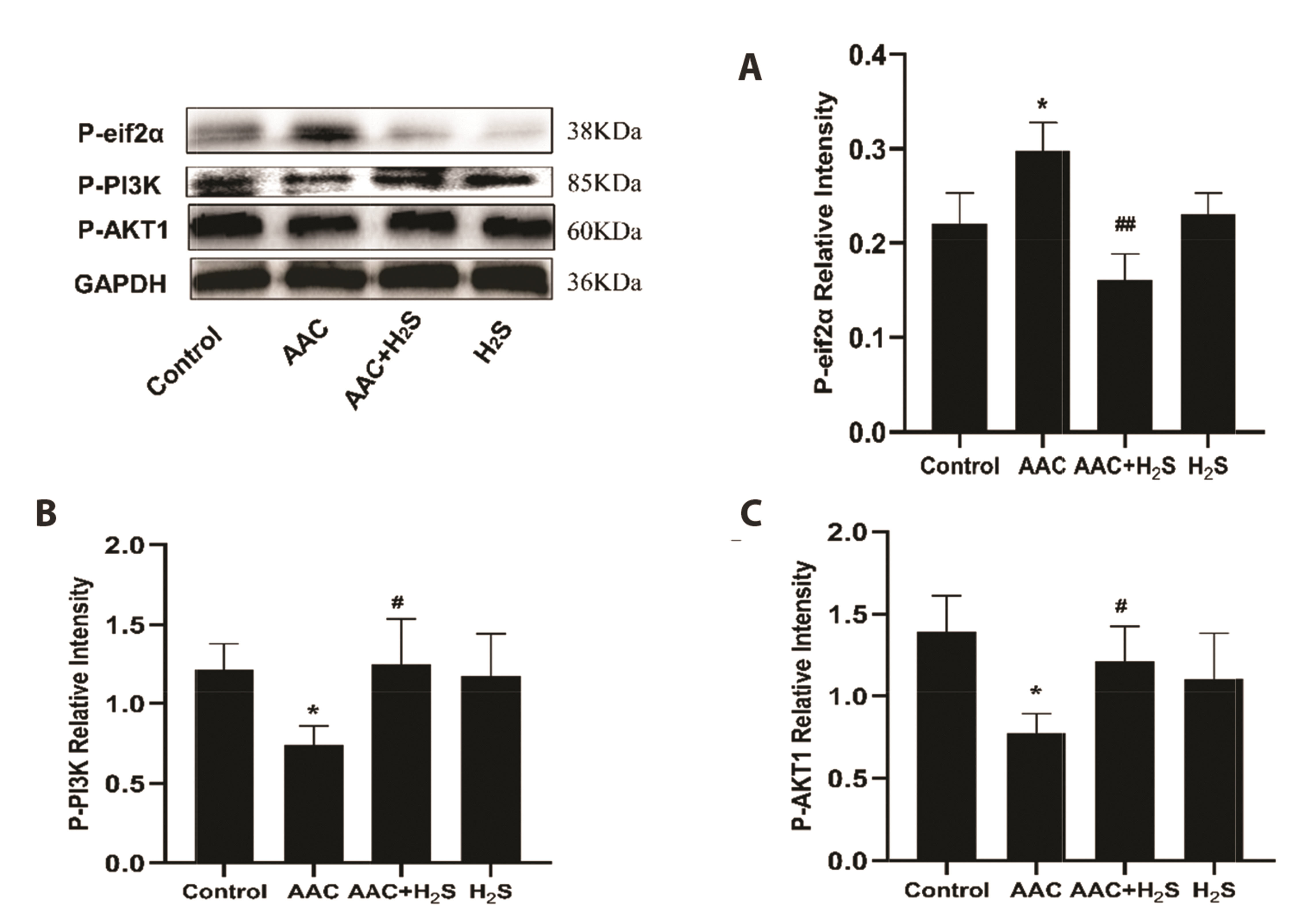
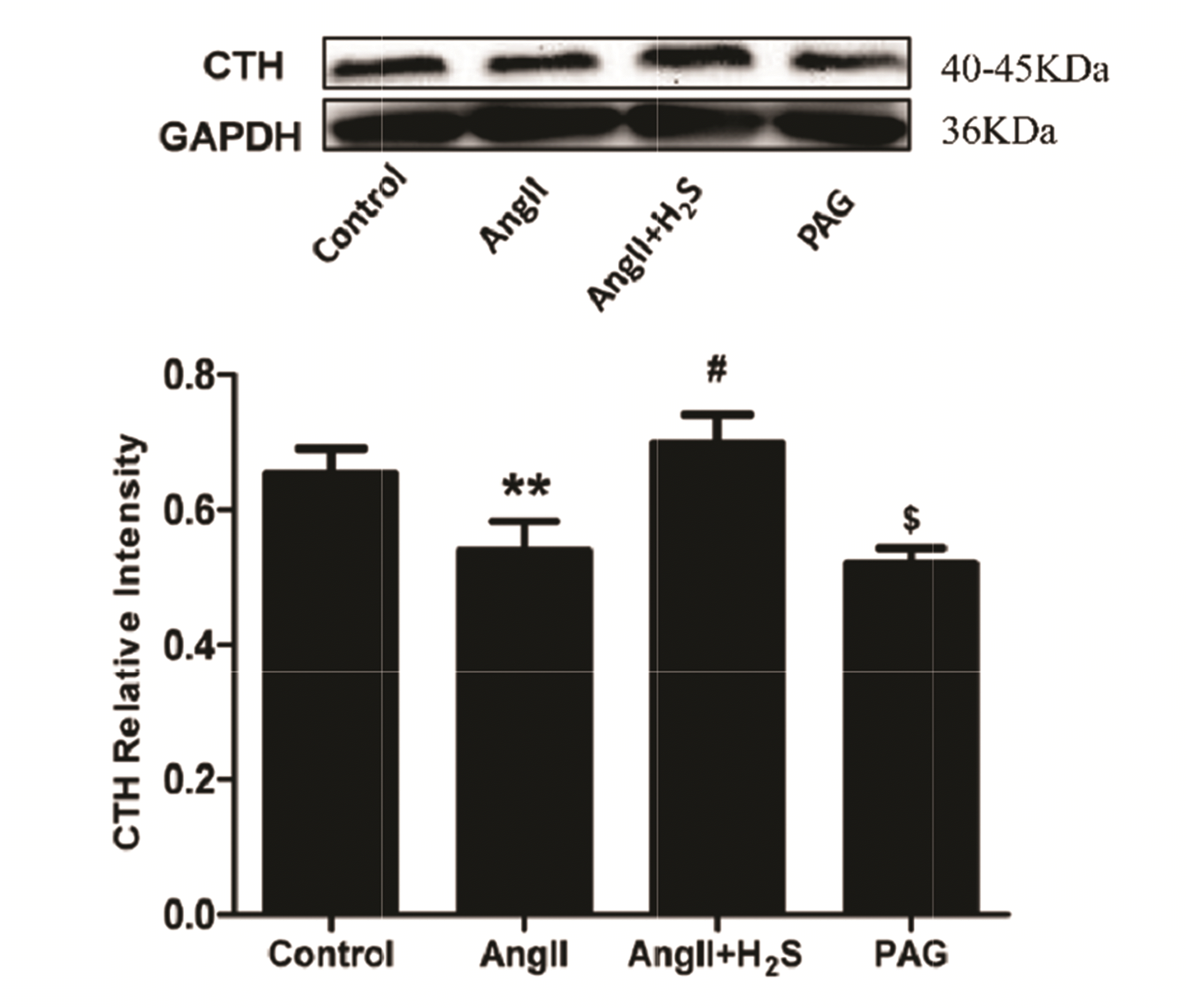
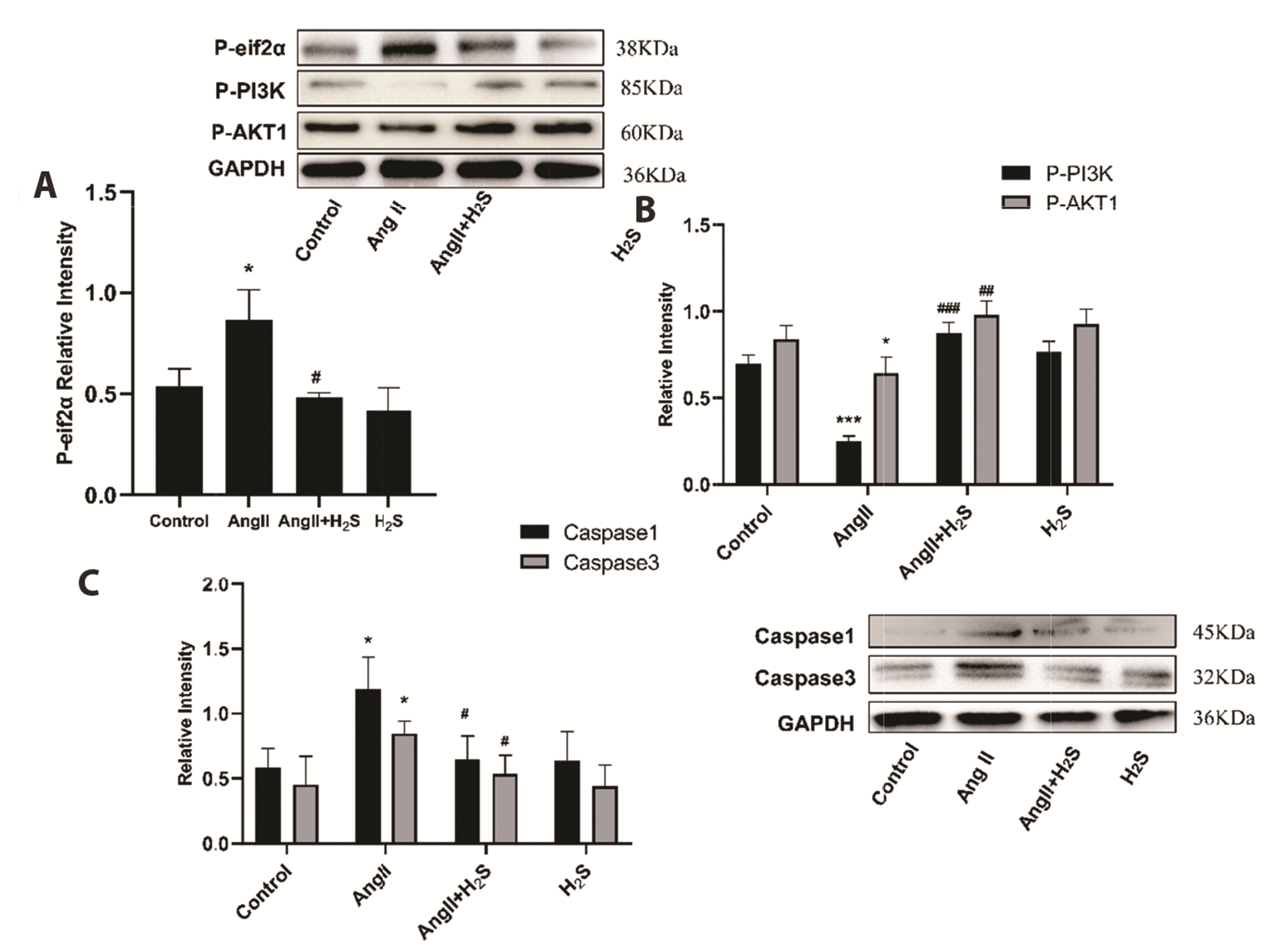
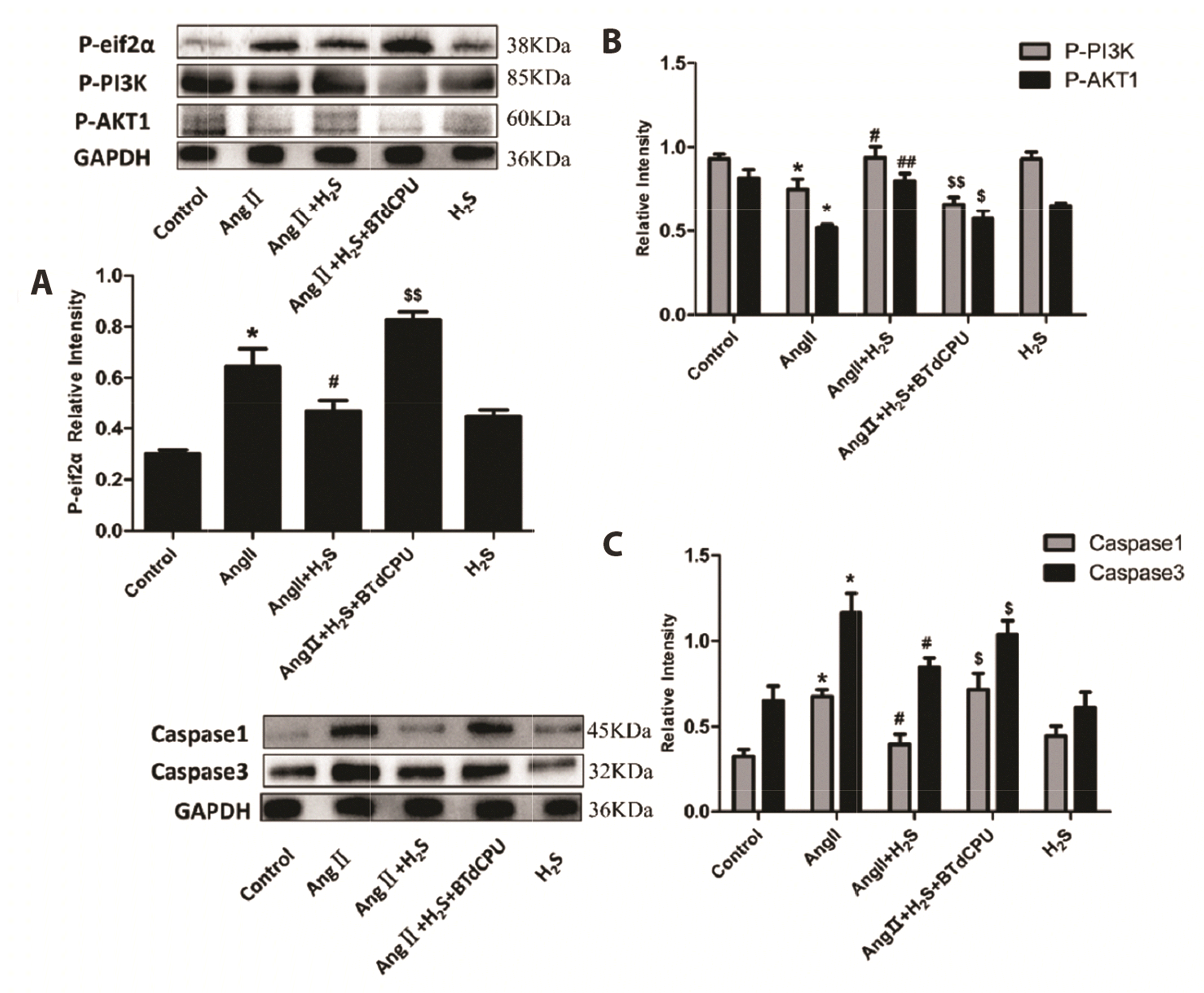




 PDF
PDF Citation
Citation Print
Print


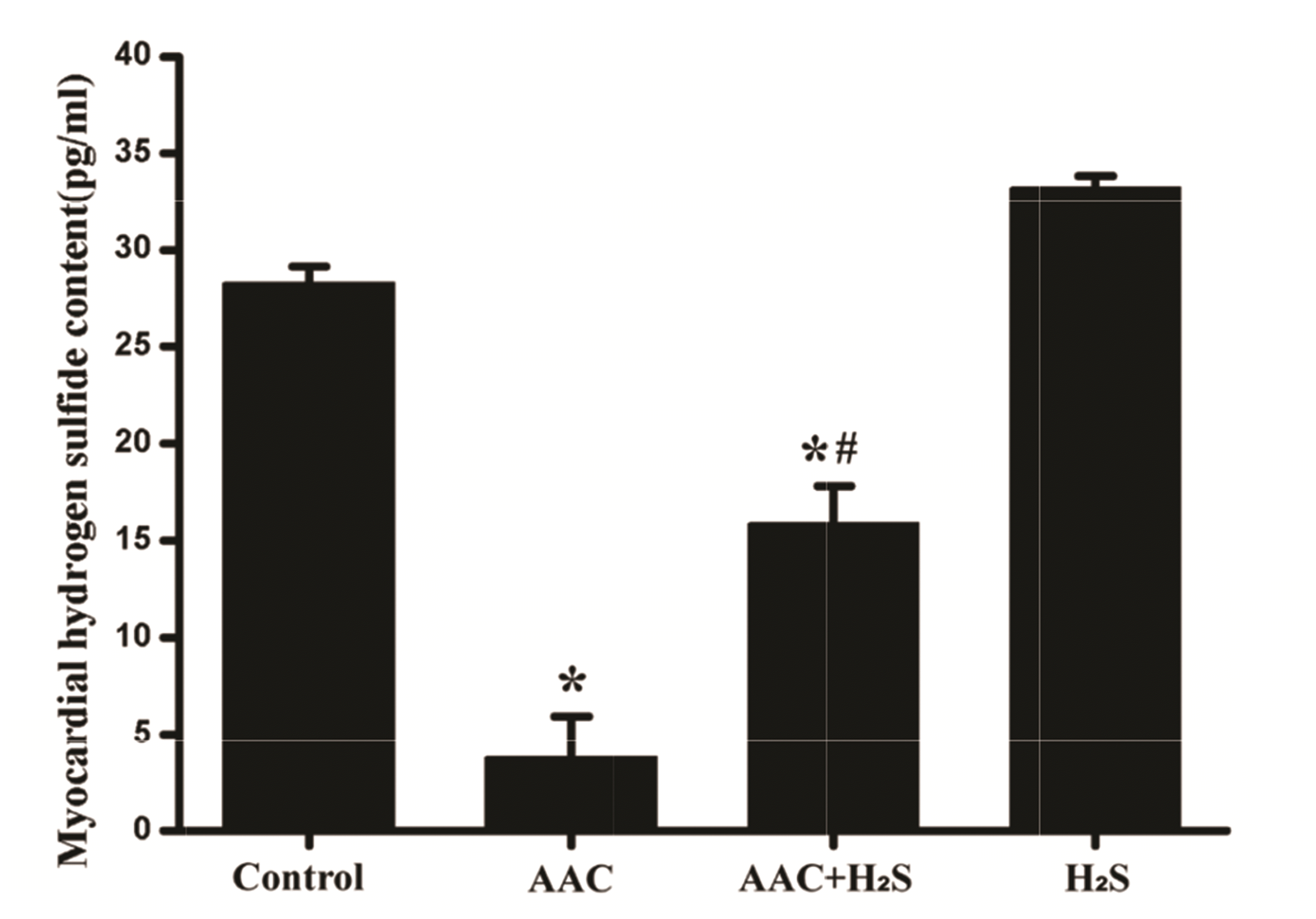
 XML Download
XML Download